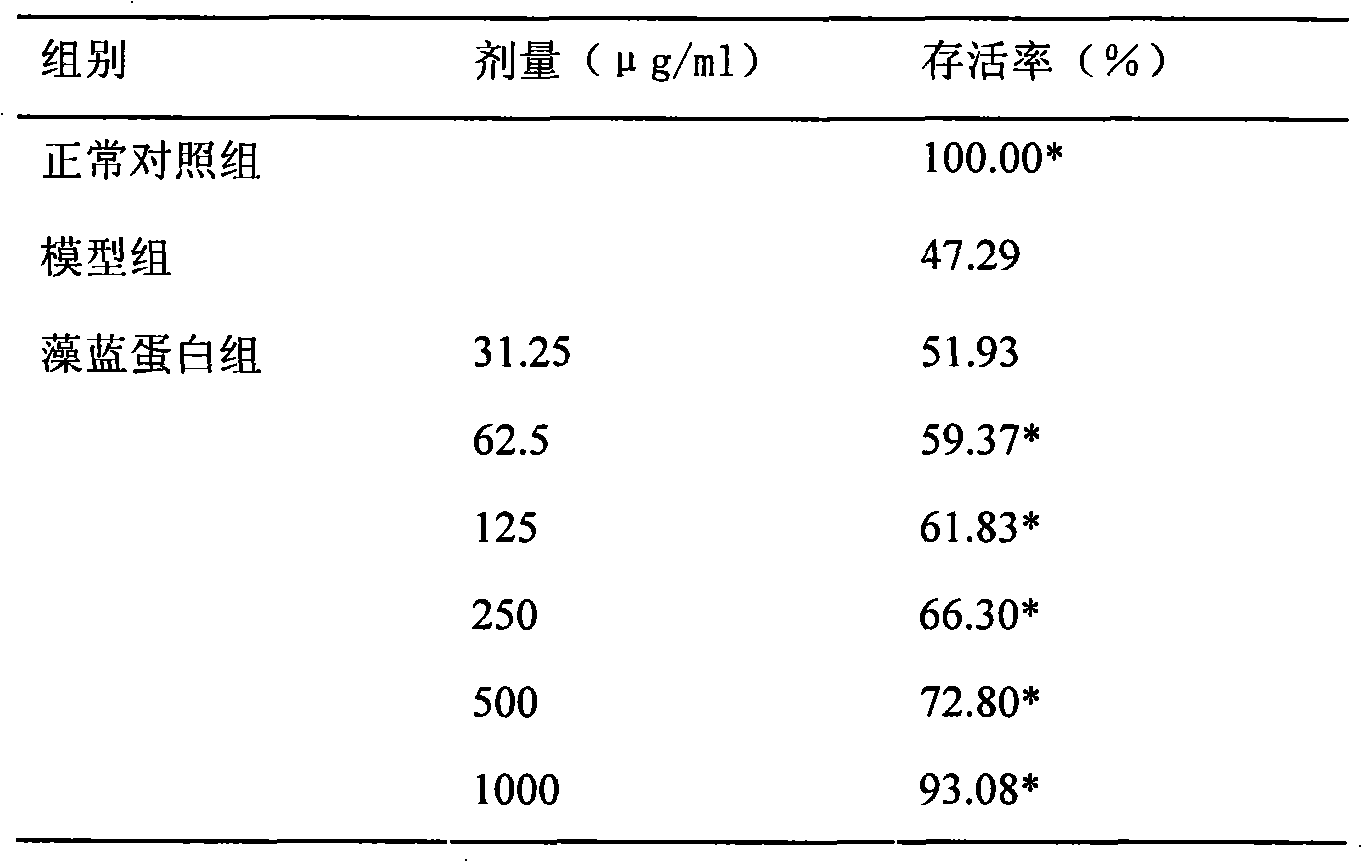Protection effect of light-harvesting chromoprotein of algae on lens epithelial cells
A technology of epithelial cells and photopigments, applied in the field of light-harvesting pigment proteins
Inactive Publication Date: 2010-08-25
CHINA PHARM UNIV
View PDF1 Cites 0 Cited by
- Summary
- Abstract
- Description
- Claims
- Application Information
AI Technical Summary
Problems solved by technology
Phycocyanin has a wide range of activities, including anti-cancer, anti-oxidation, and treatment of cerebral ischemic injury. However, there are no research reports and applications on the protective effect of phycocyanin on lens epithelial cells.
Method used
the structure of the environmentally friendly knitted fabric provided by the present invention; figure 2 Flow chart of the yarn wrapping machine for environmentally friendly knitted fabrics and storage devices; image 3 Is the parameter map of the yarn covering machine
View moreImage
Smart Image Click on the blue labels to locate them in the text.
Smart ImageViewing Examples
Examples
Experimental program
Comparison scheme
Effect test
Embodiment 1
Embodiment 2
Embodiment 3
the structure of the environmentally friendly knitted fabric provided by the present invention; figure 2 Flow chart of the yarn wrapping machine for environmentally friendly knitted fabrics and storage devices; image 3 Is the parameter map of the yarn covering machine
Login to View More PUM
 Login to View More
Login to View More Abstract
The invention belongs to the field of biological medicaments, and relates to a protection effect of a light-harvesting chromoprotein, namely, phycocyanin of algae on lens epithelial cells. The phycocyanin can obviously inhibit the reduction of the survival ratio of the lens epithelial cells and the increment of the content of reactive oxygen species (ROS) and malonaldehyde (MDA) caused by sodium selenite, and also can obviously inhibit the structure damage and the cell apoptosis of the lens epithelial cells caused by the sodium selenite; and therefore, the phycocyanin has a remarkable protection effect on the lens epithelial cells.
Description
technical field The invention relates to the field of biopharmaceuticals, in particular to the protective effect of a light-harvesting pigment protein of algae, that is, phycocyanin, on lens epithelial cells. Background technique Epidemiological and experimental studies have shown that non-congenital cataracts can be induced by various stress factors, such as ultraviolet radiation, oxidation, abnormal calcium metabolism, diabetes, and selenium. Although cataracts are the result of a combination of factors, oxidative stress is a common mechanism for their formation. Lens epithelial cell (lens epithelial cell, LEC) is the most active part of lens metabolism, and is responsible for the growth, differentiation and damage repair of the lens. out of the lens fiber cells and produce crystallin, which acts as a barrier between the lens and the outside world. The special location and function of LECs make them vulnerable to oxidative attack, causing oxidative damage. Once the cell...
Claims
the structure of the environmentally friendly knitted fabric provided by the present invention; figure 2 Flow chart of the yarn wrapping machine for environmentally friendly knitted fabrics and storage devices; image 3 Is the parameter map of the yarn covering machine
Login to View More Application Information
Patent Timeline
 Login to View More
Login to View More Patent Type & Authority Applications(China)
IPC IPC(8): C07K14/405A61K38/16A61P27/12
Inventor 欧瑜曹倩
Owner CHINA PHARM UNIV
Features
- R&D
- Intellectual Property
- Life Sciences
- Materials
- Tech Scout
Why Patsnap Eureka
- Unparalleled Data Quality
- Higher Quality Content
- 60% Fewer Hallucinations
Social media
Patsnap Eureka Blog
Learn More Browse by: Latest US Patents, China's latest patents, Technical Efficacy Thesaurus, Application Domain, Technology Topic, Popular Technical Reports.
© 2025 PatSnap. All rights reserved.Legal|Privacy policy|Modern Slavery Act Transparency Statement|Sitemap|About US| Contact US: help@patsnap.com



